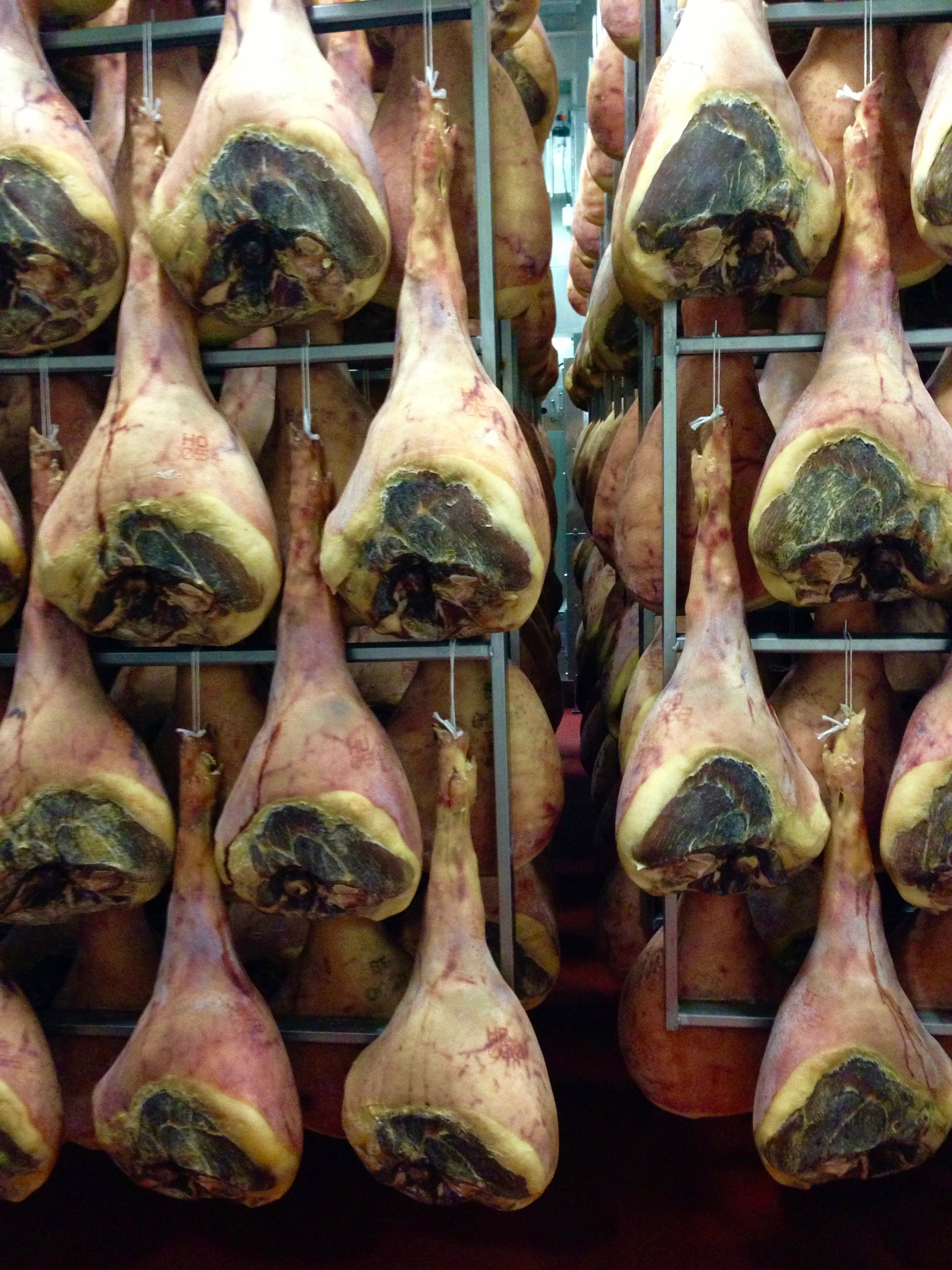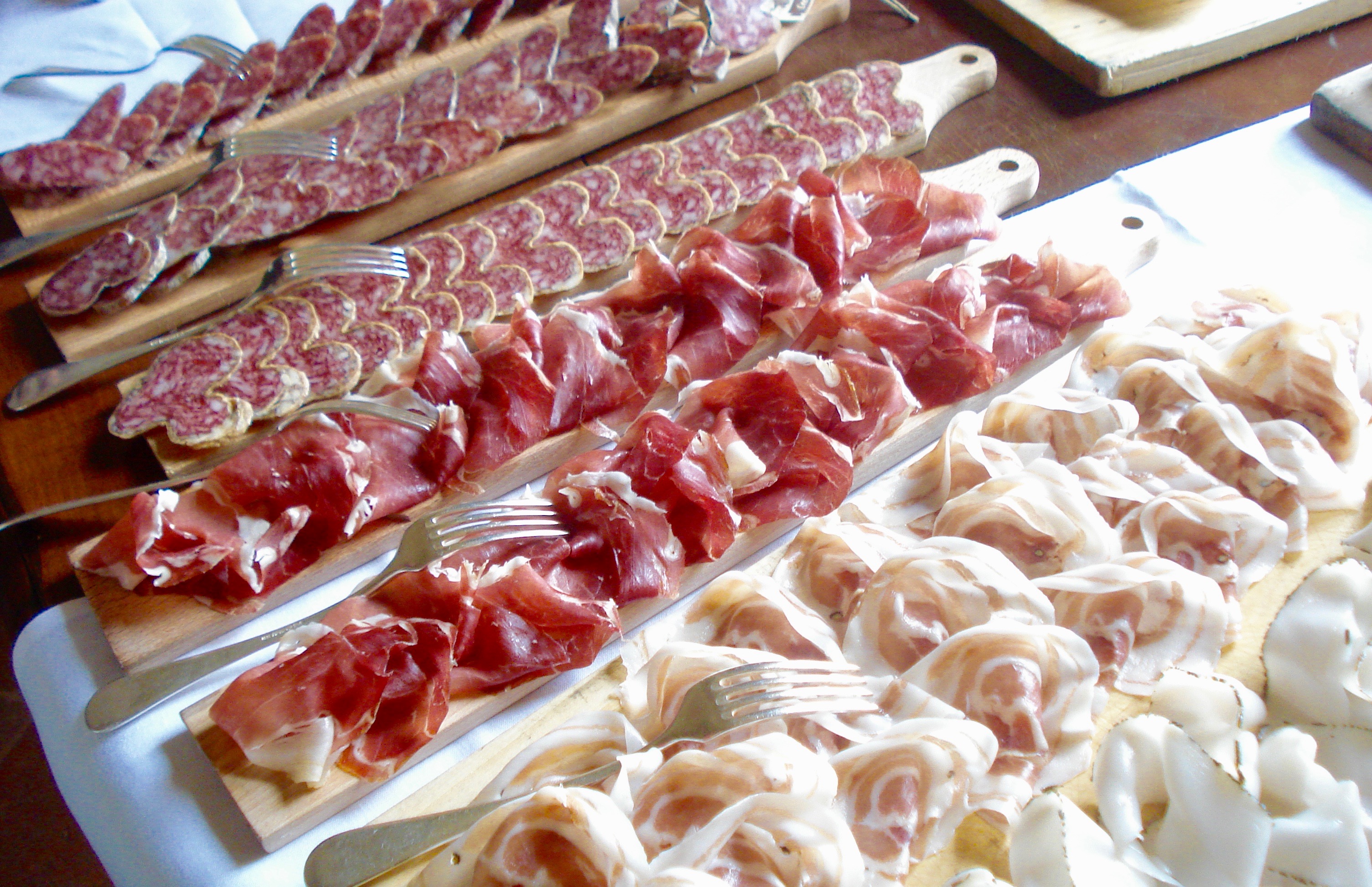Before the invention and widespread use of refrigeration, people developed a range of methods to help preserve their foods during seasonal scarcity. Drying, salting, curing, smoking and fermenting are all ancient techniques still in use today, giving us some of the most unique and flavorful foods in our diets. Think dried beans, smoked salmon, cured meats, coffee, chocolate, wine, beer, vinegar, yogurt, bread, miso, soy sauce…it’s an endless list. In some cases, these techniques weren’t just sought to preserve, but aimed at making ingredients more delicious or simply edible. If you’ve ever tasted a fresh olive before it being salted and cured you know what I’m on about.

Cured meats are one of the most delicious and fine foods man has come to create. A fresh piece of meat, salted and aged for months, can develop through time incredibly complex umami, savory, sweet and bitter flavors that simply were not there before. What happens? Basically, if the already existing enzymes in the flesh are brought to the right conditions, they begin to break down the meat’s proteins, fats and glycogen. These are transformed into amino acids, fatty acids and sugars. These compounds host all the flavors we love and over time magic happens. There is no cooking technique that can give a piece of meat such depth in flavor.
It is believed that the Celts, a culture that developed around the extraction of rock salt, were the first to experiment with meat curing. Today the tradition is rooted all across Europe. Italy itself hosts hundreds of different regional salumi (Italian for charcuterie). They vary according to climate, regional traditions and family recipes. Starting with smoked speck from the northern mountain areas, to super spicy hot sausages in the Southern regions such as Calabria. Salumi fall into two main categories, those made from a whole muscle such as prosciutto or culatello and those made with ground meat such as salame and finocchiona. To recognize an authentic well made salume there are a few tips you can follow:
- The aging time is a good indicator, some products just need that time to develop, and cannot be made taking short cuts
- The origin of the meat: if stated it’s usually a matter of pride, a specific breed, possibly even animals raised free range.
- No additives
- Natural casings: when talking of stuffed products, such as salami, the casings must be animal-derived, any synthetic casing does not permit the meat to breathe and age over time

The king of salumi is culatello, the most sought after cured meat made from the large muscle mass in a pig’s rear leg. It can only be made in a specific province in the central region Emilia Romagna, aged in 500 year old cellars for at least 10 month. When visiting this part of Italy make sure to stop by Antica Corte Pallavicina, a gastronomical temple producing what might be the best culatello on the planet, praised and shipped worldwide. They have stylish rooms and a delicious fine dining Michelin starred restaurant. You must of course visit the ageing cellars, which lie underneath the property and are filled with slow aged culatellos, labelled with the names of customers spread all over the world. Including Prince Charles and Alain Ducasse, for example…PALLAVICINA
The art of curing meat sure is an old world tradition, luckily enough there are some great talents arising around the USA developing their own new styles and using local ingredients. Kevin Ouzts from the Spotter Trotter SPOTTED TROTTER makes incredibly authentic yet innovative salumi, bringing to Atlanta some real craft flavors. If you haven’t tried it yet make sure to get your hands on their ‘nduja (Calabrese style spreadable spicy sausage), but beware it creates addiction! Their philosophy is to respect the product they make throughout, from the humanely and locally raised pork, to organic spices and locally grown heirloom varieties of chilies! A rare exception of dedication to good food, made respectfully staying true to traditions but not being intimidated by trying new creative combinations.
